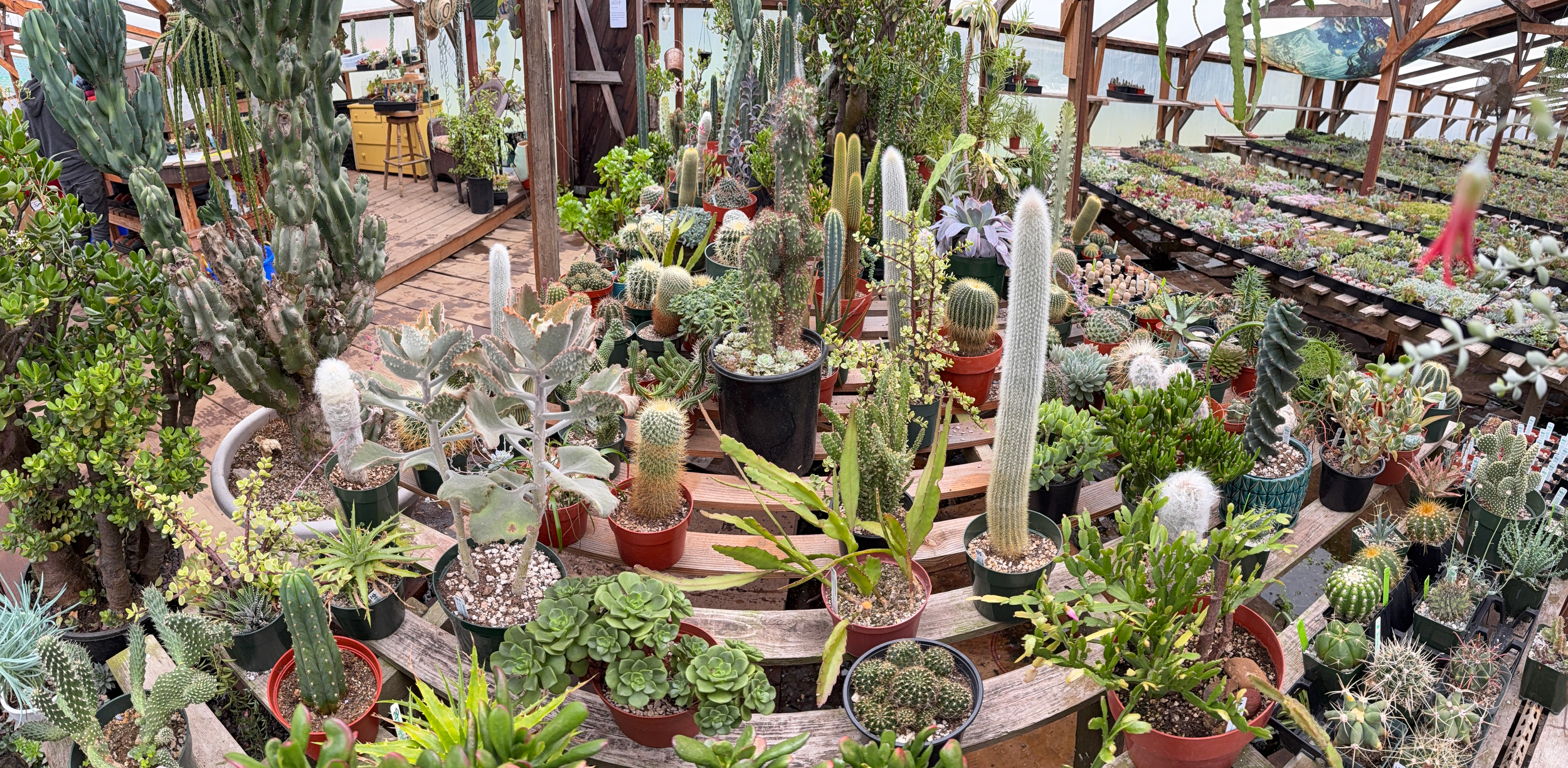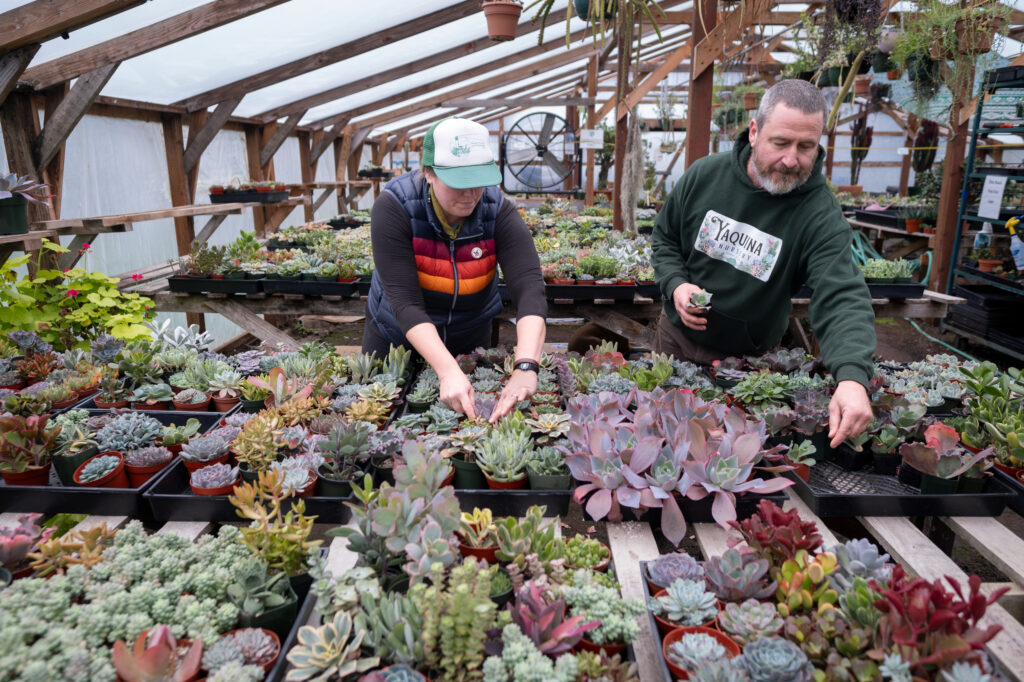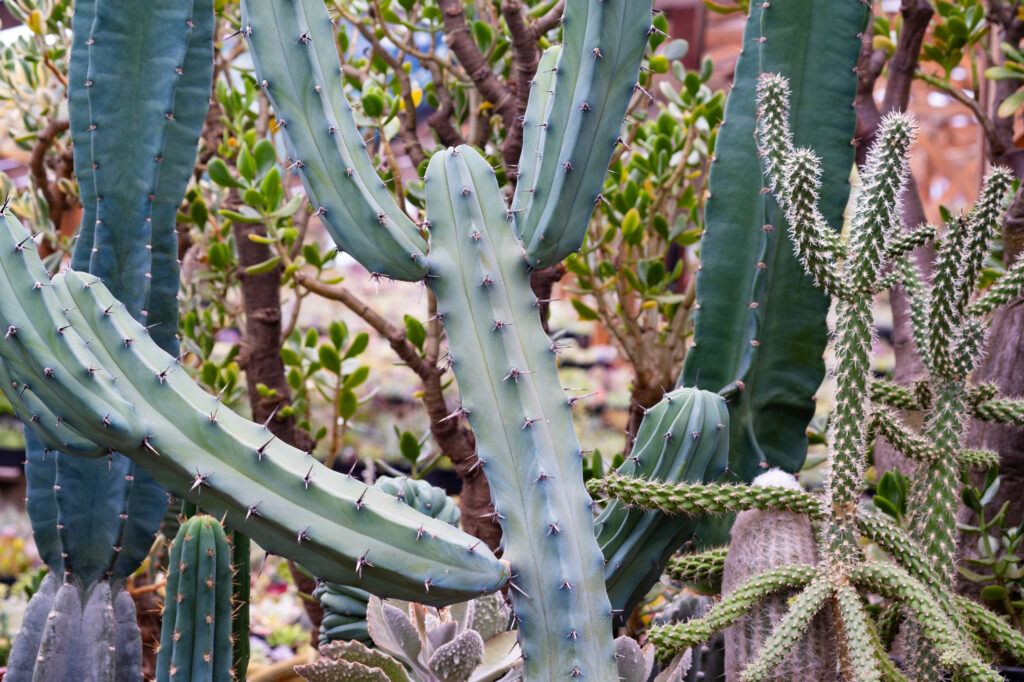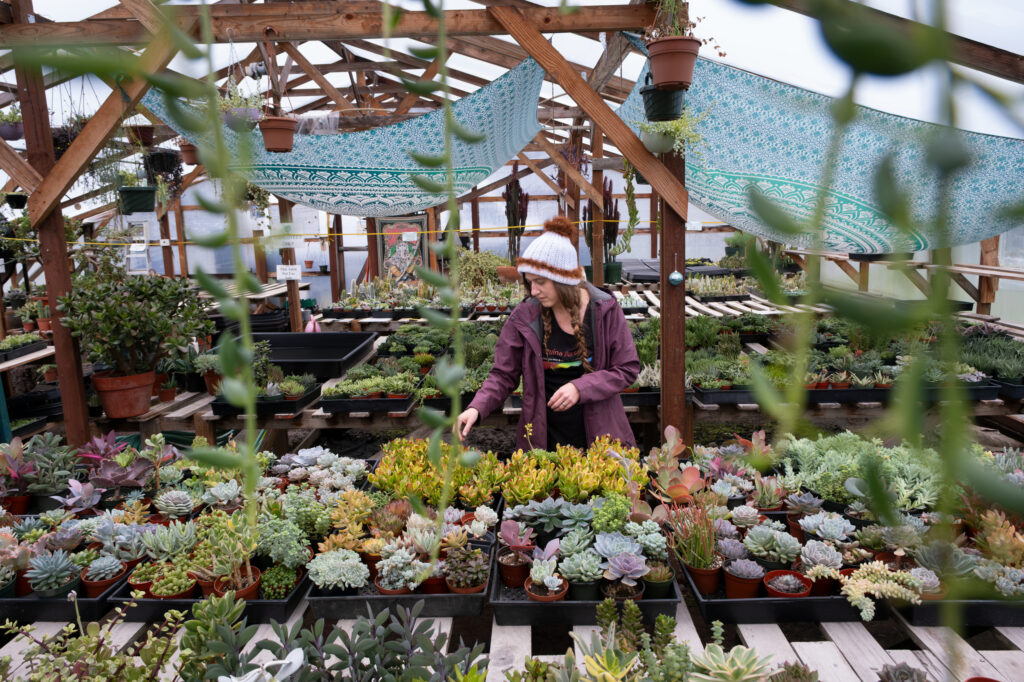
by Will Yurman
Plant Lessons
Half a million plants are a constant lesson in life and death, resilience and acceptance.
A coral reef.
That’s how Chris Valentin describes Yaquina Nursery in the Yachats River Valley.
“You walk through the front door, and as the door opens, you can see a little bit,” he said, describing his first visit to the nursery. “I saw this sea, that looked like a coral reef. The cactus are on one side, and the succulents on the other. It was hard for me to actually stop and pinpoint what I wanted to look at because it was so overwhelming.”
And it’s all cactus and succulents.

Roy Foss started the nursery in Newport in 1963. He and his second wife, Gerry, moved the business to Yachats in 2005, where they narrowed their focus to succulents and cactus. They had been looking for a buyer for seven years when they met Chris and his wife and business partner, Renee Taylor Valentin in 2020.
The Foss’s had offers for the land, but they wanted a buyer who would continue running the nursery, Renee said.
Chris and Renee were in Eugene with dreams of living near the sea. “From the very first conversation that Chris and I ever had together, we both agreed that it was a goal to live on the coast and to be closer to the ocean,” Renee said.
A friend told them about the nursery. “When we walked into the greenhouse, it was absolutely just inspiring and incredible. I mean, you walk in, and you see those plants, and it’s just mind-boggling. Like, where do all of these come from? I didn’t know that all of these different plants existed even,” Renee said, describing their first visit.

“And we just really fell in love. We fell in love with the plants and the land,” she said.
They bought the nursery and the 31 acres of land in 2021.
The two estimate they have 500,000 plants in their greenhouses with more than 500 varieties. Most of their business comes from sales to other nurseries around the state, but they are open year-round for people interested in seeing the collection or buying a few (or many) of the plants.
The main greenhouse, the one with plants for sale, is 200 feet long. Hundreds of thousands of two and four-inch pots fill table after table. It’s easy to get lost in the vastness, overwhelmed by the numbers. Chris’s advice is to take your time, roam around until you find a plant to focus on. “They’re so intricate in so many ways. Some of them are just big, beautiful, you know, like a rosette. But the other ones are so intricate. When you really start to look at them, especially some of the cactus. It just blows me away,” he said.

Both are quick to say they aren’t trained horticulturists. They and their small staff have learned on the job. They can’t name all 500 varieties of plants, and they don’t always know the answer to the questions customers bring to the nursery.
It’s about being honest with the customer, Chris said. “I think that’s huge for people when they come and ask you a question, and you say, I don’t actually know that,” he said.
“Our priority and our great joy is just stewarding the plants and living in this land and getting to, getting to work with these plants every day,” Renee said.
“I mean, that’s our office in there. And not many people get to spend all day on this gorgeous coral reef,” she said. So they share what they know and what has worked for them.
It’s magical, Renee said. Spring and fall are the peak times for flowers, but even in winter some of the plants are in bloom “… these beautiful little plants that really seem to just smile and they smile throughout the winter,” she said.
She hasn’t been there to prove it, but Renee’s been told that Yaquina Nursery has more cacti and more variety of cacti than the plant museums in Arizona that specialize in them, she said.
It isn’t about the sale for Renee and Chris. “We don’t expect people to buy anything when they come here,” she said. “But the joy of interacting with the plants and the joy of being in this remote location and out here in these hills, in the coastal range, there’s a real magic here.”








Editors Note: This story was first reported for The Oregonian/Oregon Live. A version of this story was published on their site on January 2, 2025.

I believe that leaving a legacy that is tended and nurtured is of great value to our human condition. Thank you , Chris and Renee, for falling in love again, with the plants and the land, and for believing and trusting that carrying on Roy and Jerry’s legacy mattered. Yaquina Nursery is a sacred place.